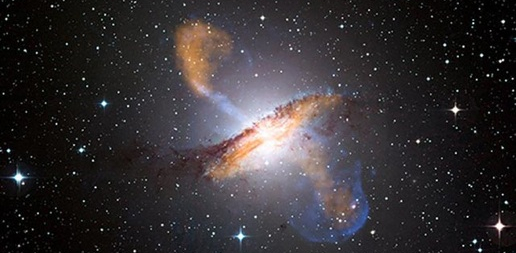
Welcome
I am a senior researcher in High Energy and Plasma Astrophysics at the IPP in Garching, and a lecturer and visiting researcher at the Institute for Theoretical Physics (ITP), University of Heidelberg, and the Max Planck Institute for Nuclear Physics (MPIK), respectively. My research focuses on the highly relativistic phenomena from Galactic to extragalactic scales such as pulsars, black holes and the relativistic jets from active galactic nuclei.
The model image above shows the nearby active galaxy Centaurus A (about 11 million light years away), a well known high energy gamma-ray emitter and a putative source of ultra-high energy cosmic rays. The center of Centaurus A, which is hidden behind the dust plane seen in the picture, is believed to harbor a supermassive black hole of about one million solar masses, and to drive the large relativistic outflows visible to the top and bottom, respectively.
See here for a recent breakthrough result based on observations of Centaurus A at highest (TeV) energies.
What is it about?
Astrophysics is the fundamental Science that aims at a physical and conceptual understanding of the Universe as revealed by a multitude of observations. From a methodological point of view, this involves application of physical principles and laboratory-motivated theories to the remote and extreme environments observed in the Cosmos. In doing so, astrophysicists usually rely on many disciplines of modern physics, such as relativity, particle physics, thermodynamics and plasma theory. By exploring new frontiers, astrophysics can thus help us to understand the Universe we live in, contribute to public science education and inspire new technological advances.

